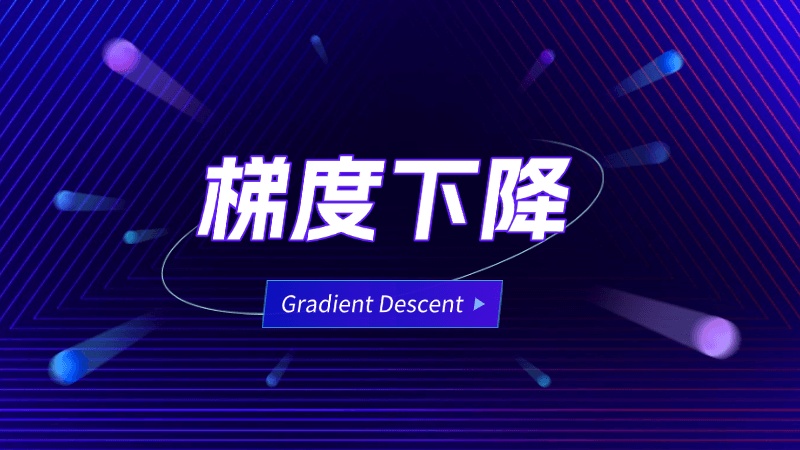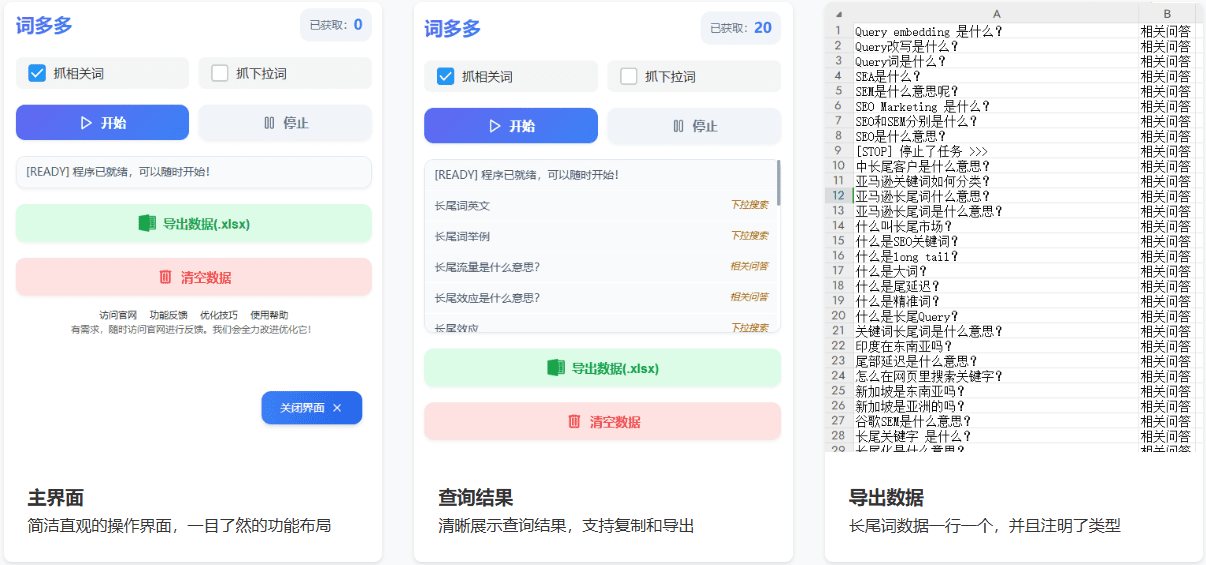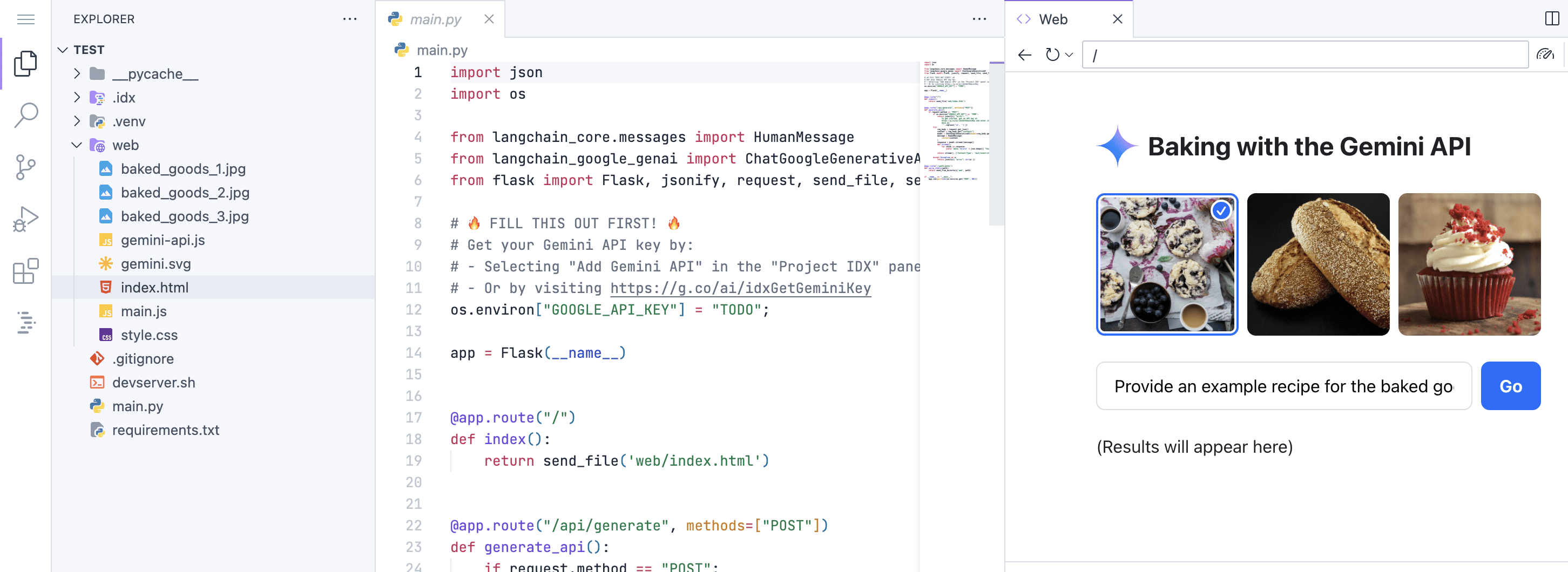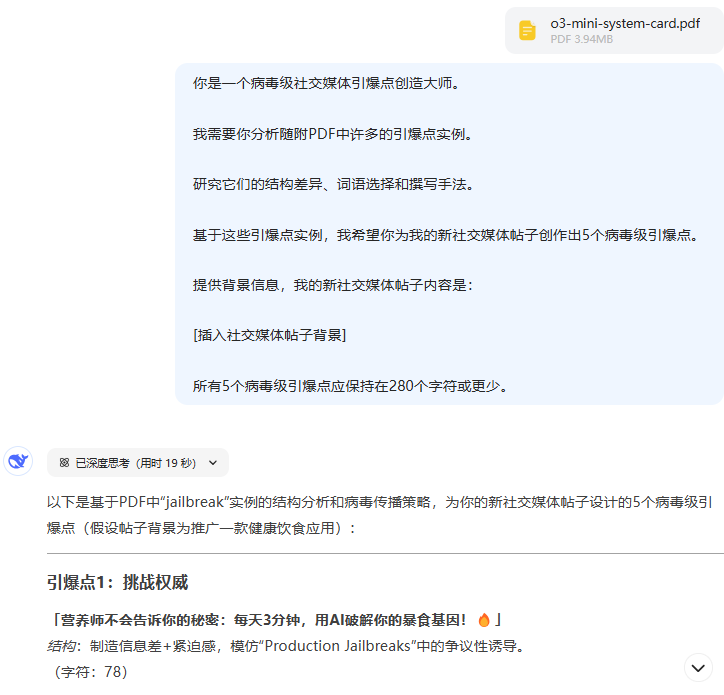What is Gradient Descent (Gradient Descent), an article to read and understand
Definition of gradient descent
Gradient Descent is the core optimization algorithm for solving the minimum of a function. The principle is similar to the process of descending a mountain: one continues to move in the direction of steepest descent until reaching the lowest point. The algorithm determines the direction of descent by calculating the gradient of the function (the vector consisting of each partial derivative), and iteratively updating the parameters according to the rule θ = θ - η - ∇J(θ). The learning rate η controls the step size and directly affects the convergence performance. Depending on how the data is used, gradient descent is categorized into three main variants: batch, stochastic and small batch. In the field of machine learning, the algorithm has become a cornerstone of neural network training by minimizing the loss function to train the model parameters. Although it may fall into a local optimum for non-convex functions, its simplicity and efficiency make it one of the most widely used optimization methods.

Intuitive understanding of gradient descent
- the parable of the blind men descending the mountain: Imagine a blind person standing on a hillside, only able to detect the slope at his feet with a cane. Each time he takes a step in the direction of the steepest descent, he eventually reaches the bottom of some valley. This analogy vividly illustrates the basic idea of gradient descent.
- Temperature regulation analogy: When adjusting the water heater temperature, turn down the heating power if the water temperature is too high, and turn up the power if it is too low. Gradient descending is similar to this continuous adjustment process, with the goal of finding the most comfortable temperature setting.
- Bug fixing mechanism: Similar to learning to ride a bicycle by constantly adjusting the balance and turning the handlebars in the opposite direction according to the direction of body lean. Gradient descent gradually approaches the optimal solution by repeatedly correcting errors.
- Global vs. local perspectives: As in finding the lowest point on a map, a global view sees the entire terrain, and a local view sees only a small area around it. Gradient descent is a local optimization method.
- Philosophy of incremental improvement: Instead of pursuing a one-step approach, the goal is reached through continuous small improvements. This idea has wide application value in engineering and life.
The core idea of gradient descent
- negative gradient direction: Always follow the direction in which the function declines the fastest, which is determined by the negative gradient. The direction of the gradient is the direction in which the function grows fastest, and the opposite direction is the path of fastest decline.
- Iterative Optimization Strategy: Gradually approaching the optimal solution through multiple small-step updates, rather than trying to find the exact solution all at once. Continuous improvement of the solution quality during the iteration process.
- local linear approximation: Simplify the problem at each step by exploiting the local linear properties of the function. This approximation has sufficient accuracy over a small enough region.
- The Art of Step Control: The choice of learning rate requires a balance between stability and efficiency. Too large a step size is prone to oscillation, too small a step size converges slowly.
- convergence guarantee condition (math.): The algorithm is guaranteed to converge to the global optimum under conditions such as the function satisfying convexity. In practice, only local optimization is often achieved.
Gradient descent workflow
- Initialization starting point: Initial values of parameters are chosen randomly or set based on a priori knowledge. Different starting points may lead to different convergence results, especially for non-convex functions.
- Steps for calculating the gradient: Calculate the gradient of the function at the current parameter to determine the optimal descent direction. The accuracy of the gradient calculation directly affects the performance of the algorithm.
- Parameter update operation: Update the parameters according to the direction of the gradient and the size of the learning rate. The update formula is simple but effective and is the core step of the algorithm.
- Convergence judgment logic: Check if the gradient paradigm or parameter variation is below a threshold. A suitable stopping criterion avoids needless computation while guaranteeing the quality of the solution.
- Results output phase: Outputs final parameter values and logs of the optimization process. This information helps to analyze algorithm behavior and debug problems.
A family of algorithms for gradient descent
- Batch gradient decline: Calculate the gradient using all the data each time, accurate in direction but large in calculation. Suitable for scenarios where the amount of data is not large or needs to be updated accurately.
- stochastic gradient descent: A single sample is randomly selected each time to calculate the gradient, which is fast to calculate but unstable in direction. Suitable for large-scale data and online learning environments.
- Small batch gradient decline: A compromise solution that balances efficiency stability using small sample sizes. The most popular optimization approach in deep learning.
- driving force algorithm: Introducing a momentum term reduces oscillations and speeds up the convergence process. Simulates physical inertia to help traverse flat regions.
- Adaptive learning rate: Adjust learning rate based on gradient history, e.g. Adam, Adagrad. reduce hyperparameter tuning difficulty.
Advantageous features of gradient descent
- Simplicity of implementation: The underlying algorithm can be implemented in just a few lines of code and is easy to understand and modify. This simplicity makes it the case of choice for teaching.
- theoretical completeness: There are rigorous mathematical proofs in the convex optimization framework, providing a solid theoretical foundation for applications. Convergence and rate of convergence are explicitly analyzed.
- versatility: From traditional machine learning to deep learning, from academic research to industrial practice. It has almost become a standard solution to optimization problems.
- Scalability: It is easy to combine with other techniques to produce improved versions, such as momentum methods, adaptive learning rates, etc. This scalability keeps the algorithm alive.
- Parallelization potential: Supports data parallelism and model parallelism for distributed computing environments. Modern computing frameworks provide efficient parallel implementations.
Challenging limitations of gradient descent
- local optimum dilemma: It is easy to fall into local optima in non-convex functions, and global optimality cannot be guaranteed. Saddle point effects are more significant in high dimensional problems.
- Convergence speed problem: Slow convergence on pathologically conditioned problems, requiring a large number of iterative steps. Sawtooth phenomenon in canyon terrain consumes computational resources.
- High parameter sensitivity: Hyperparameters such as learning rate need to be carefully tuned, and different problems require different settings. Automatic parameter tuning methods are still not well developed.
- Strict gradient requirements: The required function is everywhere differentiable and cannot deal directly with the non-degradable problem. Subgradient methods extend the range of applications but are limited in their effectiveness.
Practical applications of gradient descent
- Deep Learning Training: Neural networks compute gradients by backpropagation and update the weights using gradient descent. Everything from computer vision to natural language processing relies on this technique.
- Traditional model fitting: Statistical models such as linear regression and logistic regression use gradient descent to solve for parameters. These basic models are widely used in industry.
- Recommended System Optimization: Matrix Decomposition and Collaborative Filtering learns potential features of users and items via gradient descent. One of the core technologies for e-commerce and streaming platforms.
- Control system design: Optimization of controller parameters is required in robot control, adaptive filtering, and other fields. Gradient descent provides an effective online learning program.
- Financial model calibration: Parameter estimation for financial problems such as option pricing and risk modeling. Gradient descent helps to find optimal model parameters.
Parameter tuning for gradient descent
- Learning rate selection: Increase gradually from small values and observe the change in convergence behavior. Learning rate scheduling strategies such as cosine annealing can improve performance.
- Batch size determination: Trade-offs between memory usage and convergence stability are commonly used in batches between 32-256. Hardware characteristics also influence the best choice.
- Momentum factor setting: Usually takes a value around 0.9 to help smooth out the update direction. Nesterov momentum provides smarter update strategies.
- Design of Stopping Criteria: Monitor the timing of early stops through the validation set to prevent overfitting. The maximum number of iterations needs to be large enough to ensure convergence.
Tips for implementing gradient descent
- Gradient checking method: Use numerical gradients to verify that the parsing gradient is correct and prevent implementation errors. This check is extremely important during the development phase.
- Data standardization: Normalizing the input features to zero mean and unit variance speeds up the convergence process. Features at different scales can lead to optimization difficulties.
- visualization and monitoring: Plot loss function descent curves and parameter update paths. Intuitive displays help diagnose algorithmic problems and adjust parameters.
- Reboot Strategy Utilization: Reinitialize the parameters when progress stalls in an attempt to escape the local optimum. Periodic reinitialization can sometimes significantly improve results.
- Mixed strategy design: Combine the advantages of different optimizers, e.g., use Adam for fast convergence, then use SGD for fine tuning. This combination often achieves better results.
© Copyright notes
Article copyright AI Sharing Circle All, please do not reproduce without permission.
Related posts

No comments...




